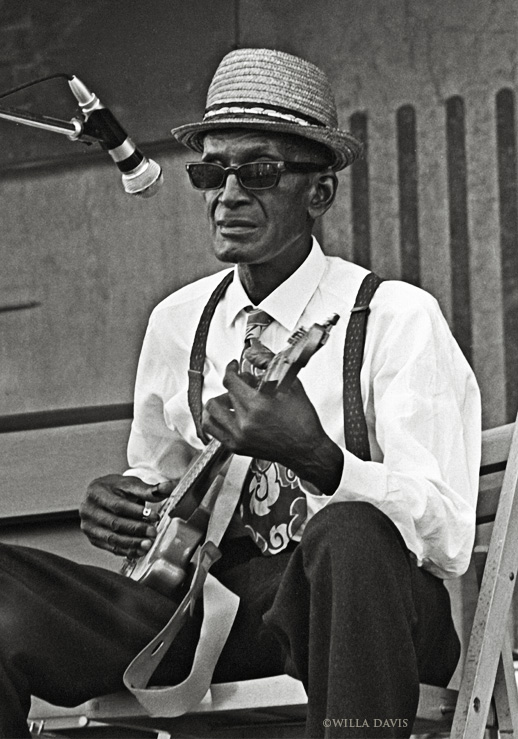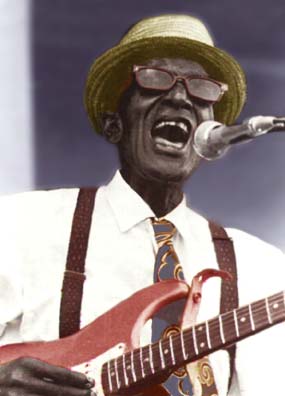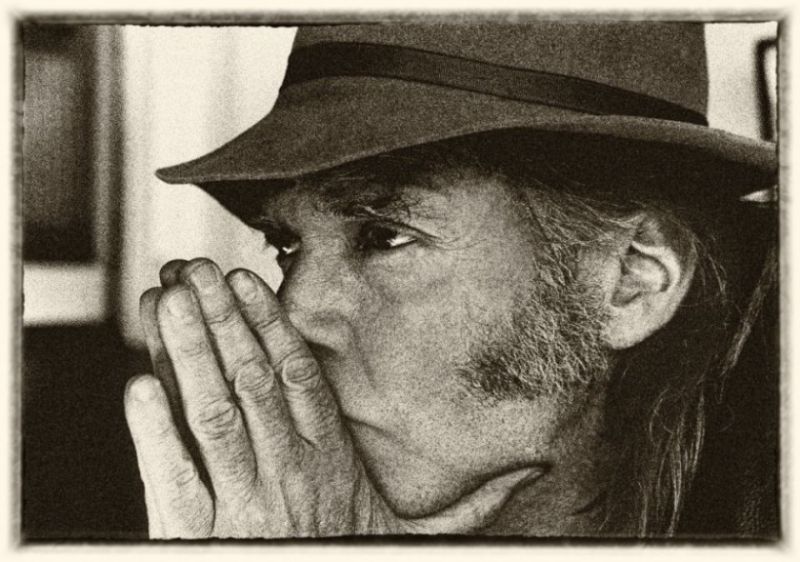Photo by Willa Davis
From Wikipedia:
John Adam Estes (January 25, 1899 – June 5, 1977), best known as Sleepy John Estes or Sleepy John, was a American blues guitarist, songwriter and vocalist, born in Ripley, Lauderdale County, Tennessee.
From allmusic.com:
Despite the fact that he performed for mixed black and white audiences in string band, jug band, and medicine show formats, his music retains a distinct ethnicity and has a particularly plaintive sound. Astonishingly, he recorded during six decades for Victor, Decca, Bluebird, Ora Nelle, Sun, Delmark, and others. Over the course of his career, his music remained simple yet powerful, and despite his sojourns to Memphis and Chicago he retained a traditional down-home sound. Some of his songs are deeply personal statements about his community and life, such as “Lawyer Clark” and “Floating Bridge.” Other compositions have universal appeal (“Drop Down Mama” and “Someday Baby”) and went on to become mainstays in the repertoires of countless musicians. One of the true masters of his idiom, he lived in poverty, yet was somehow capable of turning his experiences and the conditions of his life into compelling art.
— Barry Lee Pearson
Mailman blues:
Album of the day @ JV:
Other June-05:
Continue reading Today: Sleepy John Estes passed away in 1977 – 35 years ago







